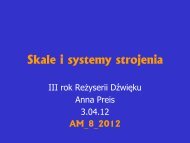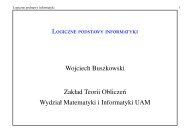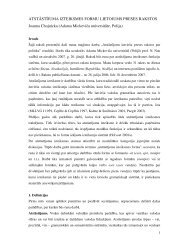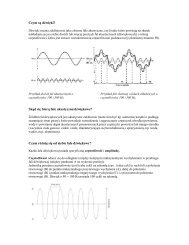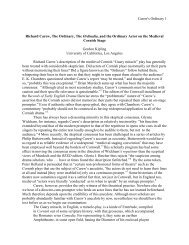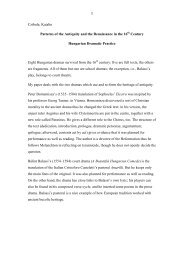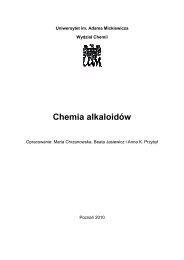Amir Weiner Getting to Know You
Amir Weiner Getting to Know You
Amir Weiner Getting to Know You
You also want an ePaper? Increase the reach of your titles
YUMPU automatically turns print PDFs into web optimized ePapers that Google loves.
GETTING TO KNOW YOU 9<br />
control, and arresting prominent government figures and leaders of Polish,<br />
Ukrainian, and Belorussian “counterrevolutionary” parties. The dismantling<br />
of the political and civilian leadership and potential opposition groups<br />
<strong>to</strong>taled over 13 million people and was handled by five operational groups of<br />
50–70 agents on the Ukrainian front and four groups of 40–55 agents on the<br />
Belorussian front. Each operational group was assisted by a military battalion<br />
of 300 soldiers. 10<br />
The NKVD struck with lightening speed. Less than four weeks in<strong>to</strong><br />
the invasion, the Belorussian NKVD had already identified no fewer than<br />
3,535 counterrevolutionary “elements,” and by late November 1939 the<br />
organization had already arrested nearly 12,000 people throughout the former<br />
eastern Polish terri<strong>to</strong>ries. 11 When the NKVD chief in Belorussia reported<br />
the arrest of some 581 Polish officers and army reservists in early December,<br />
he emphasized that they were targeted based on compromising materials.<br />
Evidently, the system was already fully functioning. 12 By the spring of 1940,<br />
the Polish underground, the NKVD’s main target, practically ceased <strong>to</strong> exist,<br />
with most of its members arrested and directed <strong>to</strong> the Soviet courts and<br />
prisons. A similar fate befell the resilient Ukrainian nationalist organizations<br />
following the arrest of over 4,400 activists. 13<br />
The three Baltic states were meticulously studied nine months before their<br />
annexation. The NKVD in Leningrad dispatched agents <strong>to</strong> the embassies and<br />
trade missions with detailed instructions on information-gathering methods<br />
in the political realm, the Russian émigré community, foreign intelligence<br />
activity, the region, and economic affairs. The prominence of the NKVD<br />
agents was underscored when shortly after the lead agent in Tallinn, Vladimir<br />
Botskarev, was appointed Soviet ambassador <strong>to</strong> Es<strong>to</strong>nia and personally<br />
handled the formation of the new government in the summer of 1940. 14 A<br />
10 Vasyl´ Danylenko and Serhii Kokin, eds., Radians´ki orhany derzhavnoï bezpeky u 1939–<br />
chervni 1941 r: Dokumenty HDA SB Ukraïny (Kiev: Kievo-Mohylians´ka Akademiia, 2009),<br />
42–45.<br />
11 This figure included 278 Polish officers; 1,181 White Guards and Petliurite officers; 3,544<br />
gendarmes, policemen and police agents; and 2,103 members of counterrevolutionary parties<br />
and organizations (NARB f. 4, op. 21, d. 1683, l. 139; Pol´skoe podpol´e, 246–53).<br />
12 NARB f. 4, op. 21, d. 1715, l. 127.<br />
13 Pol´skoe podpol´e, 454; Chebrikov, Is<strong>to</strong>riia, 319–20. The official his<strong>to</strong>ry of the KGB in 1977<br />
offered much more modest figures of arrests than its own reports in 1939–40—about 3,000<br />
arrests—which it admitted did not translate in<strong>to</strong> a conclusive liquidation of the nationalist<br />
underground organizations in the annexed terri<strong>to</strong>ries (Chebrikov, Is<strong>to</strong>riia, 322).<br />
14 On the embassy in Tallinn, see Eesti Riigiarhiivi Filiaali (ERAF) SM f. 138, n. 1, s. 57, ll.<br />
3–9, 11–13. On the embassy in Kaunas, see Lietuvos ypatingasis archyvas (LYA) f. K-1, ap.<br />
49, b. 826.



